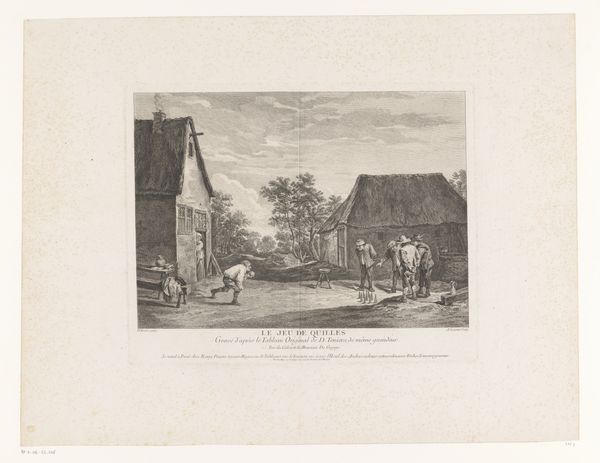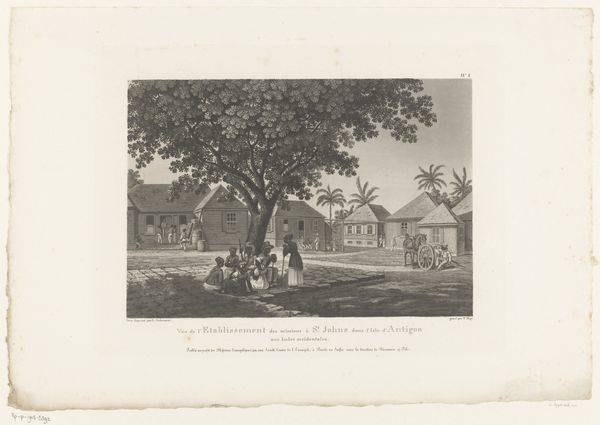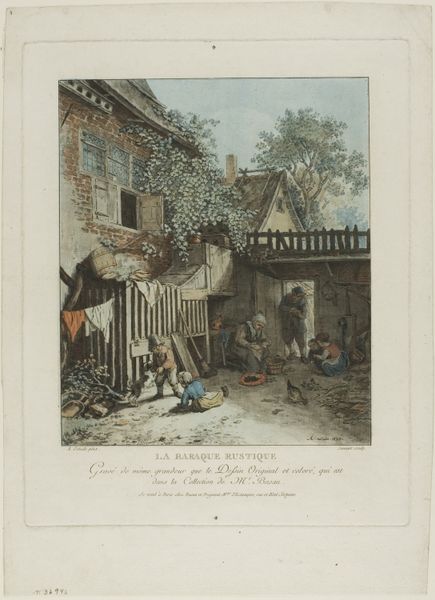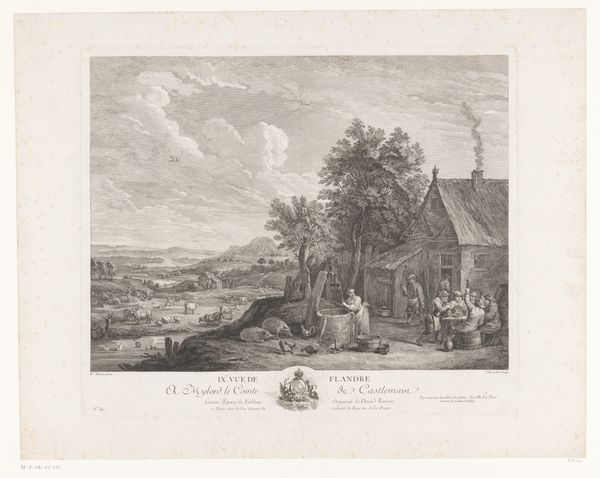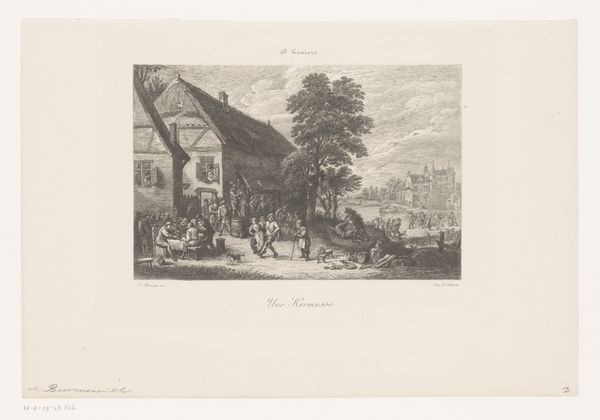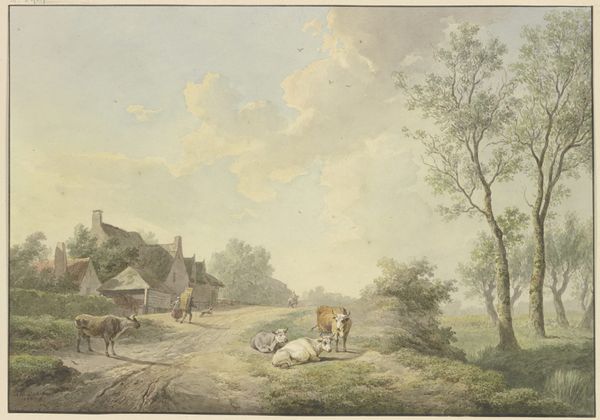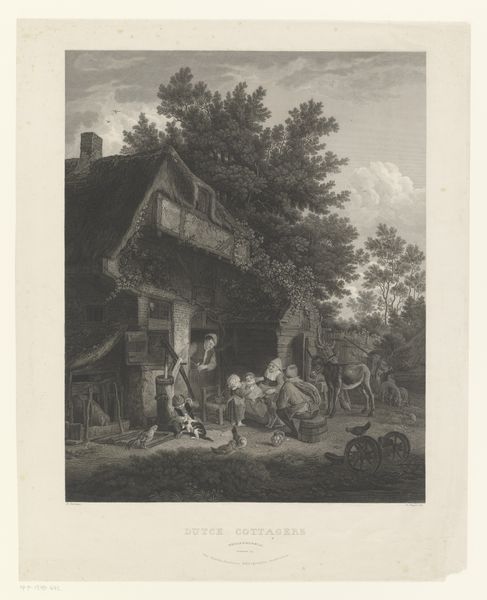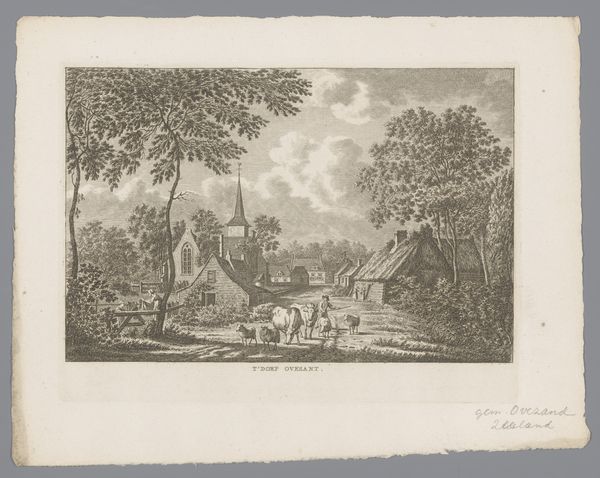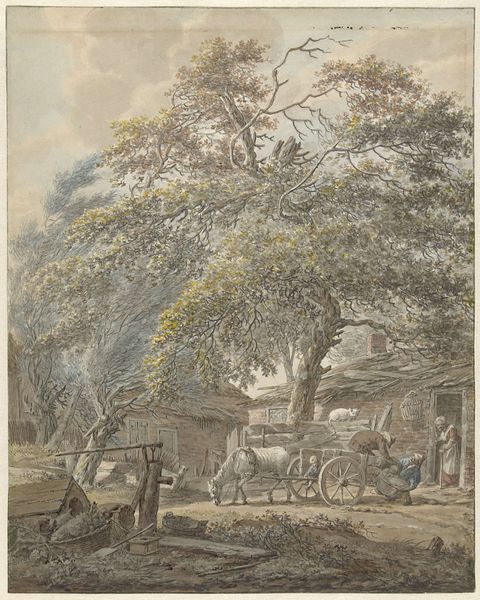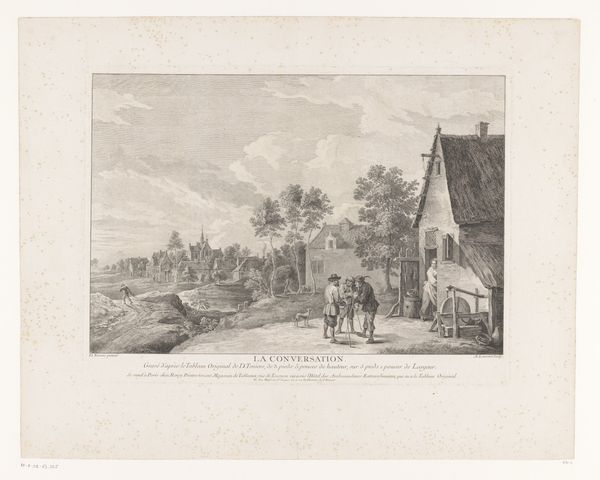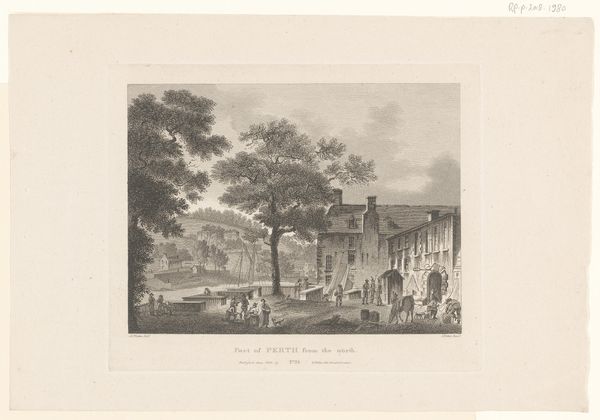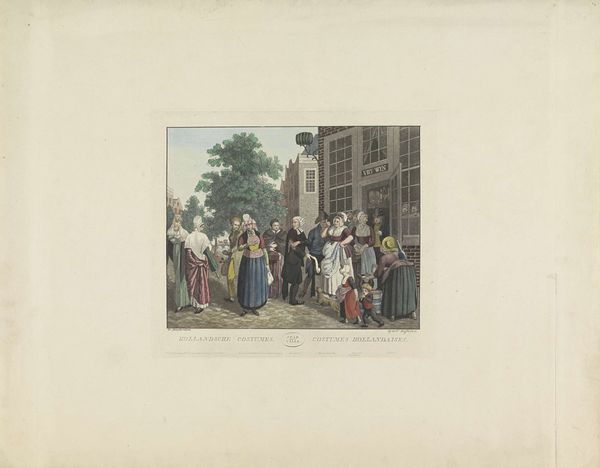
#
print photography
#
photo of handprinted image
#
yellowing
#
aged paper
#
yellowing background
#
photo restoration
#
natural tone
#
joyful generate happy emotion
#
archive photography
#
historical photography
Dimensions: height 204 mm, width 242 mm
Copyright: Rijks Museum: Open Domain
Art Historian: Formalist Editor: This is an interesting print, seemingly untitled, though it is referred to as "Dorpsplein met kinderen rond een kijkkast," placing it sometime between 1850 and 1900. I believe it’s a hand-printed image, though showing its age through the yellowing of the paper. The overall mood is quite charming; children gathered around some form of traveling show, but I am curious as to what draws your attention in this work? Art Historian: What immediately strikes me is the deliberate use of the oval format. How do you perceive this choice impacting the composition? Editor: It seems to isolate the scene, like a captured memory or a glimpse through a spyglass, containing the scene. Does this not serve to emphasize the feeling of a fleeting moment observed? Art Historian: Indeed. And what about the relationship between the figures and their setting? Observe the interplay of light and shadow, the brushstrokes, and how they define the forms. Note the textural contrast between the rough-hewn architecture and the softer, rounded shapes of the figures. Does this offer some interesting lines and form for the eye to follow? Editor: Certainly, the buildings are more rigid, whilst the artist captured the people in curved smooth forms which serve to soften the architecture behind them. Art Historian: Precisely. Consider the placement of each element within the frame. How does the artist manipulate space and form to create depth and balance? Where does your eye go first, and why? Editor: The group of children, mostly as they’re centered but also due to the various pops of colors and detailing in their attire. But also my eye gets carried around the piece, there is not a section in the composition left untouched, even in the upper reaches of the sky the tones capture me, it keeps it enclosed rather than sparse. Art Historian: It is not simply a representation of a village scene, but a carefully constructed arrangement of shapes, tones, and textures that create a unique visual experience. Note how the artist organizes the picture’s surface to reveal underlying principles of harmony and order. A dynamic interplay between the forms, isn't it? What new appreciation has formal analysis opened up for you? Editor: I had not viewed it that way, by diving into the surface qualities you come away with a completely alternative reading and it causes a closer, more intimate viewing of the work. I appreciate this take on the artwork!
Comments
No comments
Be the first to comment and join the conversation on the ultimate creative platform.
